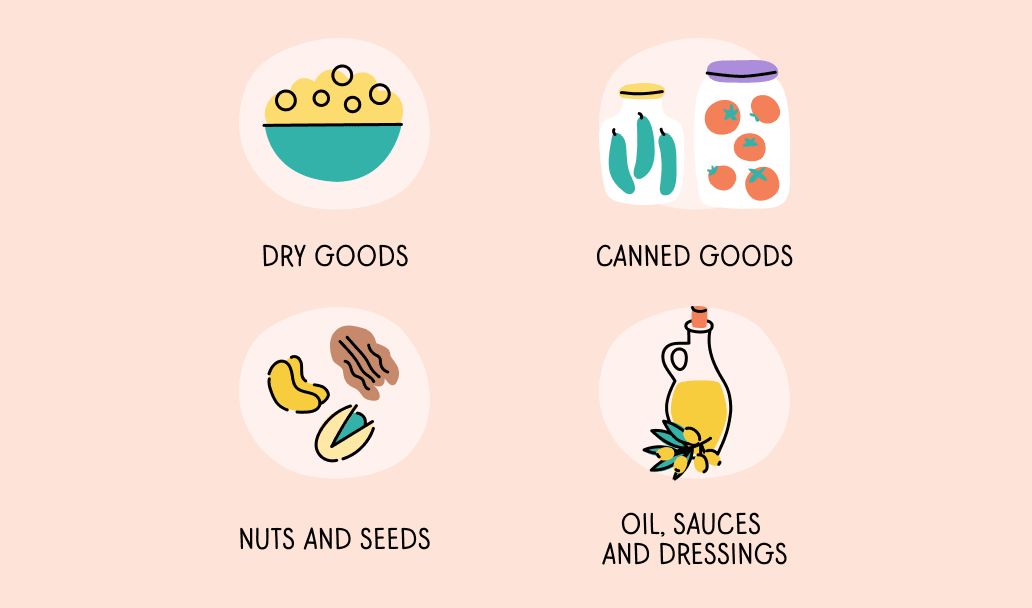It's no secret that eating well is the key to a happy, healthy life. But for many of us, when it comes to clean eating, knowing what to eat and what to avoid can be incredibly overwhelming. The clean-eating diet is a modern lifestyle choice that has been proven to have many health benefits.
While the diet can seem restrictive at first, it's actually very simple and easy to follow. So, we've created a clean eating diet food list you can use as your guide when navigating the grocery store aisles or cooking at home. Whether you're looking to prepare a simple snack or something more substantial for dinner, this list will help you find just what you need.
Eat tasty food and lose weight with Unimeal app!
Take a Quiz – Get personal meal plan – Achieve your weight goals!
Start QuizClean eating is a diet that focuses on consuming whole foods while avoiding processed foods and refined sugars. The goal of this diet is to eat foods that are as close to their natural state as possible1Suman Ambwani,Gina Sellinger, Kelsey L. Rose,Tracy K. Richmond and Kendrin R. Sonneville. 7 June 2020. “It’s Healthy Because It’s Natural.” Perceptions of “Clean” Eating among U.S. Adolescents and Emerging Adults Nutrients 2020. DOI:10.3390/nu12061708. While this may seem like a lot of work, clean eating can be incorporated into your everyday life and doesn’t have to be a major change.
It is easier to plan meals when all the ingredients are already in the kitchen. Here is the ultimate food list that you can use to start your clean eating diet:



You'll want to avoid a few foods while following the clean eating diet. Here are some of them and why they're no good for you:
Trans fats are often used in restaurants and fast-foods because they give foods desirable taste, they are inexpensive and easy to use. Oils with trans fats change rarely in commercial fryers. According to the American Heart Association, eating trans fats can increase your risk of developing heart diseases, stroke and diabetes. Also trans fats raise your bad (LDL) cholesterol levels and lower your good (HDL) cholesterol levels.
Chemical preservatives like nitrates and nitrites are often used in deli meats. 2020 study2Keller, Rosa M. BS; Beaver, Laura PhD, MS; Prater, M. Catherine; Hord, Norman G. PhD, MPH, RD. 2020. Dietary Nitrate and Nitrite Concentrations in Food Patterns and Dietary Supplements. Nutrition Today. DOI:10.1097/NT.0000000000000253 showed that they could increase the risk of colorectal cancer. But there are healthy options as well - preservative-free meats derived from poultry ( turkey and chicken breast). Compared to beef or pork delis, poultry ones have less saturated fat content and calories per serving.

It's no secret that alcohol consumption has nothing to do with a healthy lifestyle. Alcohol has almost the same calories per gram as pure fat. It may increase the risk of diabetes, may cause cardiovascular disease, and increase blood pressure.
The Dietary Guidelines for Americans recommends that adults of legal drinking age can choose not to drink or to drink in moderation by limiting intake to 2 drinks or less in a day for men or 1 drink or less in a day for women.
Sugar-sweetened beverages, which include the full spectrum of soft drinks, fruit drinks, energy and vitamin water drinks, are composed of naturally derived caloric sweeteners such as sucrose, high fructose corn syrup, or fruit juice concentrates. Collectively they are the largest contributor to added sugar intake in the US diet. If consumed regularly, they can also lead3Vasanti S Malik, Frank B. Hu. 2012. Sweeteners and Risk of Obesity and Type 2 Diabetes: The Role of Sugar-Sweetened Beverages. Current Diabetes Reports DOI:10.1007/s11892-012-0259-6. to obesity, diabetes, and other metabolic disorders.
They are full of preservatives, chemicals, and other additives designed to keep them looking fresh and appealing longer than they probably should, making them unhealthy for your body.

When you start a clean eating diet, you want to do it right. That means buying only the best ingredients and preparing them at home. Here are some simple ways you can follow this diet:

Generally, clean eating is a diet that focuses on eating natural ingredients and whole foods free of artificial ingredients and preservatives. This diet consists of lean protein, whole grains, fruits and vegetables, healthy fats, and dairy products. While the list of foods you can eat is pretty long and delicious, there are also some foods you should avoid, such as highly processed food products.
Unimeal does not diagnose or suggest treatments. Any description of the diet, training plan or supplement should be discussed with your current physician or nutritionist. This article does not address specific conditions and is simply meant to provide general information on healthcare topics. Following any advice is at your own initiative and does not impose any responsibility on the blog authors for your health and safety.
Sources:
By choosing high-quality sources, we make sure that all articles on the Unimeal blog are reliable and trustworthy. Learn more about our editorial processes.
1.
2.
3.